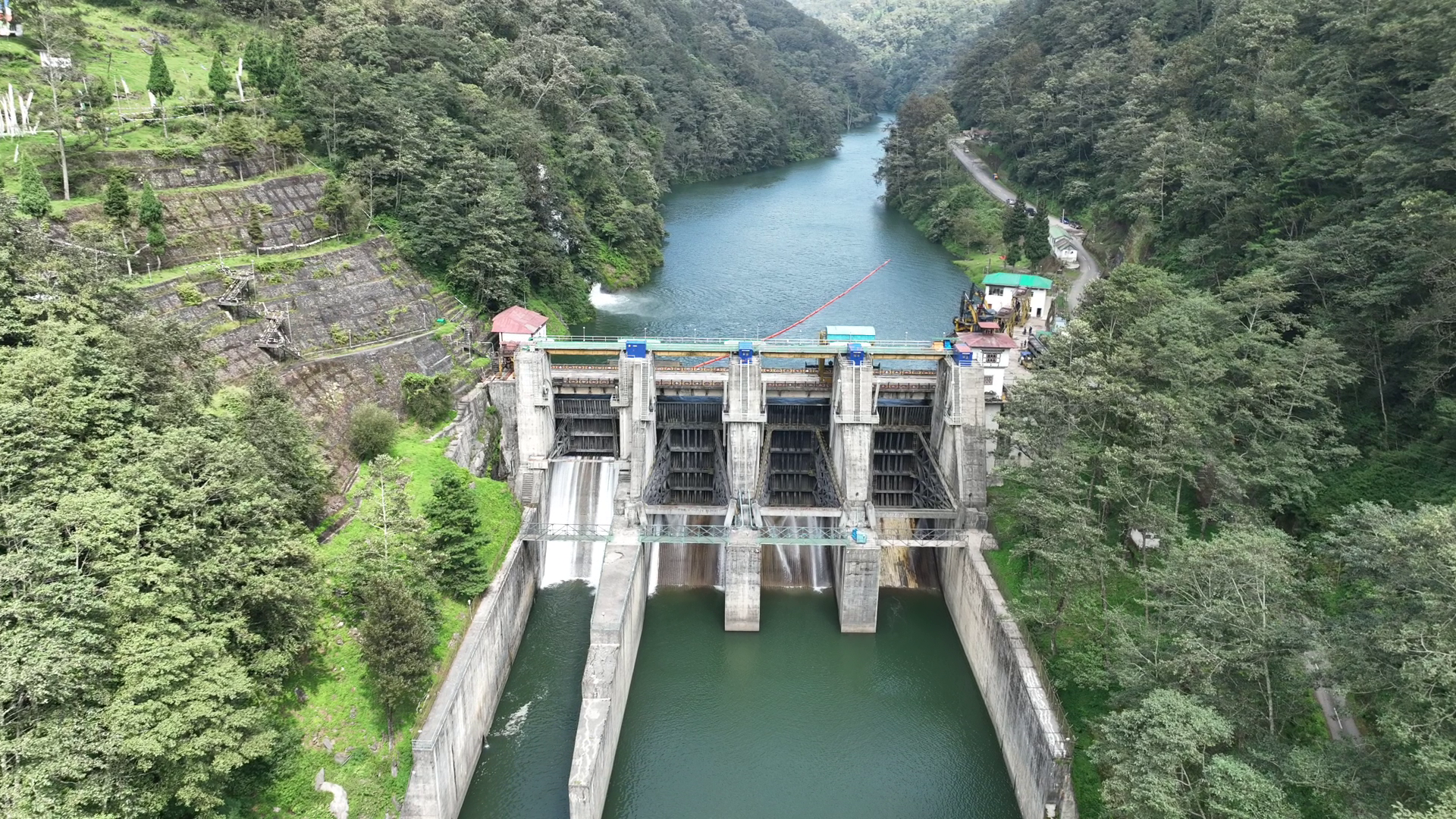Project scheme : Run-of-the-river
Project commission : 1986 – 1988
Installed capacity : 336 MW
Chhukha hydropower plant (CHP) in south-west Bhutan is the oldest power plant of DGPC. It was then the largest and the most prestigious bilateral project considered by the Royal Government of Bhutan and Government of India.
His Majesty Jigme Dorji Wangchuck, the Third King of Bhutan, envisioned the development of hydropower for lighting homes and establishing industries within Bhutan, as well as earning revenue from the export of surplus power to India. This vision of His Majesty’s was fulfilled by His Majesty Jigme Singye Wangchuck, the Fourth King of Bhutan, when the agreement for Chhukha hydroelectric project was signed between the two governments. Chukha Project Authority (CPA) was constituted to implement the project.
The dam and powerhouse are at an offset of about 6 km from Tsimasham town and 3 km from Chhukha Zero Point on Thimphu-Phuentsholing highway. A 40 m high diversion dam is used for diverting the water from Wangchhu for electricity generation. This water is conveyed through a 6.5 km headrace tunnel. Four spillway gates are used for discharging the excess water.

Operation and Maintenance
The original tail race tunnel (TRT) restricted generation to 320 MW. To enable designed generation capacity with 10% overloading provision during peak, a secondary TRT was constructed in 1995. The generation was further augmented with the diversion of Tichhalumchhu to the dam and Lubichhu to the surge shaft in 2009. They are diverted during the lean period when the Wangchhu discharge falls below the requirement of full generation capacity. The annual additional energy generation from these two diversion schemes is 67 MU.
The electricity generated by CHP is sold to Bhutan Power Corporation Limited for domestic consumption, and surplus energy is exported to India through PTC India Limited. CHP provides 15% of the annual energy production as royalty energy to RGoB.

Renovation and Modernisation
Over the years, DGPC has initiated major rehabilitation and modernisation of the plant. To overcome problems associated with the ageing and obsolescence of spares and support services and also to improve on efficiency and reliability of the power plant, refurbishment works were begun in 2006 with the excitation and governor systems and generator brackets. This was followed by the upgradation of Unit I and III generators, protection system, switchgear and dam radial gates hoisting mechanism and most recently the replacement of Unit IV generator was completed. The replacement of Unit II generator and the auxiliary equipment of all four units is being currently taken up. A modern SCADA system will be incorporated by 2025-2026. These R&M works are being taken up in a phased manner during the lean periods to avoid generation loss.
Socio-Economic Benefits and Sustainability
CHP’s commissioning was a defining moment in Bhutanese history of modern development and transformation of the economy, generating much-needed revenue. The project supplied reliable energy to western Bhutan and enabled the setting up of many industries such as cement, calcium carbide, ferro-alloy, food processing, and many others.
CHP continues to support the Druk Green “Being Green” initiative through regular landscaping and plantation activities. The plant is conscious of the need to maintain a sense of harmony with the community and environment. Further, CHP sensitises the social and environmental issues that confront the hydropower sector, thereby ensuring a healthy and sustainable environment.
Furthermore, religious event such as drupchen, tshokhor and other rituals are conducted at Chhukha Zangtogpelri for the smooth functioning of the plant and the well-being of all sentient beings.
Contact
- Wangchhu, Chhukha
- +975 5 290060

